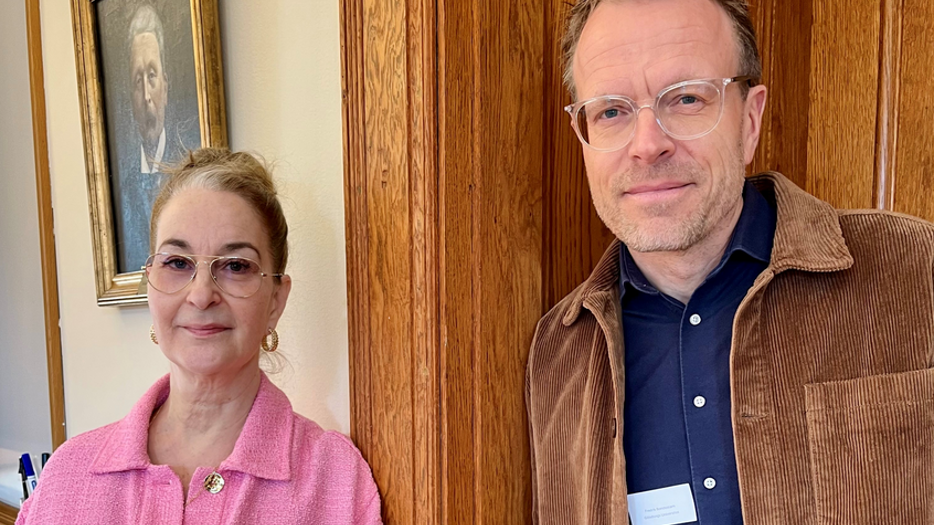EU requirements on gender equality are impacting the higher education sector
Since 2022, it has been a requirement for organisations applying for research funding from the EU’s largest funding body, Horizon Europe, to have gender equality plans in place. To discuss this and other research policy mechanisms with Swedish higher education institutions, we hosted two seminars on the theme.
The Swedish Gender Equality Agency is tasked with supporting gender mainstreaming at 33 Swedish higher education institutions. Right now, EU requirements for gender equality plans are at the forefront. To deepen our understanding of research policy, we gathered universities and research funders for two thematic meetings, held in Stockholm and Gothenburg.
Ida-Maria Linder, Head of Unit at the Swedish Gender Equality Agency, opened the session at the University of Gothenburg.
“How is the Swedish higher education sector affected by the EU’s research and gender equality policy – now and in the future? That is today’s central question. Together, we’ll take a deep dive into how this influences the work on gender mainstreaming, with the aim of ensuring that women and men have equal opportunities to contribute and develop.”
Deficiencies in governance and evaluation
Fredrik Bondestam, Director of the Swedish Secretariat for Gender Research, began the knowledge session by stating that the timing of the seminar could not have been better. That we are discussing gender equality and research policy governance at a time when the Trump administration is dismantling scientific research in the United States, and there are signs that the European Commission may ease mandatory elements in the Gender Equality Plans (GEPs), makes the issue even more pressing. At present, it remains unclear whether the mandate for gender mainstreaming in public agencies and higher education institutions will continue beyond 2026.

Bondestam reflected on the original thinking behind the support structure for gender mainstreaming in higher education (JiHU). The initiative was meant to strengthen meritocracy and equal career paths, improve quality in education and research, and help develop a healthy academic culture free from sexual harassment, stress, and long-term sick leave. Now, a decade later, we are not seeing the outcomes that were intended.
He illustrated the governance challenges using a diagram showing the number of professors by gender over a 20-year period. In 2001, there were approximately 3,000 male professors and 500 female professors. The goal then, as now, was to increase the proportion of women. But at the same time, the number of male professors rose sharply, partly due to the “promotion reform”. The proportion of female professors has gradually increased up to 2021, but the absolute difference between women and men in professorships is nearly unchanged compared to 2001.
“The evaluability of JiHU is a problem. How can gender equality – or the absence of inequality – be measured without a well-developed system of indicators for higher education? Moreover, there is virtually no reporting back to the commissioning authority.”
Higher demands lead to better results
Sophia Ivarsson, gender equality expert at Vinnova, has been involved in several initiatives aimed at advancing gender equality in European research. She noted that Vinnova’s funding processes are aligned with Horizon Europe’s requirements.
Vinnova’s efforts in gender equality support the agency’s mandate to ensure an equal distribution of funding and to promote the integration of sex and gender perspectives in the content of funded research. A framework called “Who? What? How?” has been established, where gender perspectives are integrated throughout the funding process – from calls and applications to assessment.
Projects that incorporate sex and gender perspectives in the content of their research and innovation can better address societal challenges, and their results are more likely to be relevant to a wider audience. Ivarsson stressed the importance of setting high standards, while recognising the need to avoid making the process prohibitively difficult.
“There are signals that some requirements around Gender Equality Plans may be eased slightly. But by and large, the majority of requirements will remain in future work programmes. Even if we are seeing a slight rollback – which may indicate backlash within EU gender policy – there are also reasons to believe that Europe will mobilise around these issues in future framework programmes, particularly given the developments in the United States.”
Effects of research in the United States
To conclude, the speakers were asked to comment on current research policy developments in the United States.
“My impression is that a wet blanket has been thrown over entire research fields. It’s happening so rapidly that it’s difficult to keep up. European researchers have received surveys from the US asking whether they are engaged in any research projects linked to what is known as the DEI field, and requesting assurances that no such collaborations with American universities or researchers are ongoing or being initiated. There are efforts underway to review funding opportunities for US researchers. The EU’s message is that we must stand up for democracy – but the concrete implications remain unclear,” said Sophia Ivarsson.”
”The consequences of what's happening in the US are, at this point, impossible to fully grasp – but they may eventually offer a competitive advantage for Europe. However, the EU is built on negotiations between member states, with slow preparation and decision-making processes. This makes it hard to respond quickly to developments in the US. Slow democratic institutions are not designed to withstand the populist dismantling of those very same institutions,” Fredrik Bondestam concluded.”
Publication date: 8 April 2025
Last updated: 14 May 2025
